
Triad-Orbit Orbital Mic Adaptor Review
Monday, April 28th, 2014 | by matthew mcglynn
I hang a lot of microphones. Usually a lot at once. I’ve seen all manner of microphone mounts and clips, from the simple, to the complex, to the “what were they thinking?!?!” And at one time or another, I’ve cursed them all.
The problem, I think, is that mic mounts are generally not designed to facilitate positioning. They mount the mic to the stand, and maybe they provide mechanical isolation. But they don’t provide enough range of motion to contribute meaningfully to placement. Most have a single swivel joint that can swing the mic along an arc, but that is rarely what I reach for when I have to adjust a mic’s position. Most of the responsibility for positioning therefore falls to the mic stand. And that is unfortunate, because for fine control over a mic’s position, mic stands sort of suck. The positioning controls on a mic stand are too coarse. Furthermore, clutches slip. Boom arms sag.
Have you ever tried to fine-tune the position of two mics in an XY or Blumlein array by adjusting boom stands? Sure, it’s possible, but it isn’t pretty. Nor is it fast.
Clearly, there has to be a better way to position microphones…
And there is. We just found it.
The Orbital Mic Adaptor
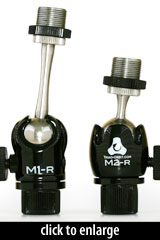 I fell in love with these products as soon as I saw a photo. Their utility and elegance was completely self-evident. My only concern was whether the build quality would stand up in real use. I am very happy to report that it does.
I fell in love with these products as soon as I saw a photo. Their utility and elegance was completely self-evident. My only concern was whether the build quality would stand up in real use. I am very happy to report that it does.
Triad-Orbit’s wonderfully useful mic adaptors are called the Micro 1 and Micro 2. Both are available in threaded or quick-change styles. Both provide a ball-and-socket adaptor that sits between the mic stand (or boom arm) and the mic clip. Both give you a degree of control over microphone position that I’ve never seen in a mic clip, stand adaptor, or shockmount. These things are fantastic.
The company’s website explains the product’s “singular objective” as precise mic placement without compromise. I think they’ve done it. But let’s see some real-world examples.
Comparing Microphones
More often than not, when I mount one microphone I immediately put a second one right next to it. I realize that this isn’t necessarily the most common use case, but it does happen — say you need to compare two vocal mics, or you’re using two separate signal chains (one with less gain and/or more compression, for distortion insurance), or you’re putting two different mics on a guitar cab. You’ll appreciate having control over the relative position of the mics.
 Here’s one example: these two Electro-Voice dynamic mics both sound fantastic on guitar cab, but their respective sizes mean one mic sits four inches behind the other. Add the Triad-Orbit Micro 1, and now the capsules are aligned, and ready to be aimed at a cab. (Click the photo to see the “before” view.)
Here’s one example: these two Electro-Voice dynamic mics both sound fantastic on guitar cab, but their respective sizes mean one mic sits four inches behind the other. Add the Triad-Orbit Micro 1, and now the capsules are aligned, and ready to be aimed at a cab. (Click the photo to see the “before” view.)
Could I have positioned those two mics individually, on two stands? Of course. But if one planned to audition multiple speakers in the cab, or a second cab altogether, one would need to individually move and reposition and fine-tune both mics individually, every time. Putting them together on one stand cuts that effort in half.
 Here’s another example: I wanted to record before-and-after samples of a microphone mod. I could have done it using the stock shockmounts, but thought I would get fairer results if the capsules were closer together. Using the Micro 1 and Micro 2 together allowed me to invert one mic, putting the capsules right next to one another.
Here’s another example: I wanted to record before-and-after samples of a microphone mod. I could have done it using the stock shockmounts, but thought I would get fairer results if the capsules were closer together. Using the Micro 1 and Micro 2 together allowed me to invert one mic, putting the capsules right next to one another.
Drum Miking
 I own a box of Audix rim clamps that are useful for putting close mics on drums. But their reach and range of motion is limited. Insert a Micro 2, and positioning — over a much broader area — becomes easy. I can pull the mic farther back from the head, or move it closer to the center of the drum. Without the Micro 2, the mic has a tiny range of possible positions, all of which are very near the rim. With the Micro 2, I can put the mic just about wherever I want it.
I own a box of Audix rim clamps that are useful for putting close mics on drums. But their reach and range of motion is limited. Insert a Micro 2, and positioning — over a much broader area — becomes easy. I can pull the mic farther back from the head, or move it closer to the center of the drum. Without the Micro 2, the mic has a tiny range of possible positions, all of which are very near the rim. With the Micro 2, I can put the mic just about wherever I want it.
 The Micro 2 excels for positioning tom mics too. Adjusting tom mic position is often challenging because of boom sag. With the Micro 2, I can leave the boom alone and quickly adjust the mic’s angle relative to the drum head.
The Micro 2 excels for positioning tom mics too. Adjusting tom mic position is often challenging because of boom sag. With the Micro 2, I can leave the boom alone and quickly adjust the mic’s angle relative to the drum head.
Stereo Arrays
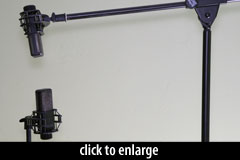 Coincident stereo arrays such as XY and Blumlein require that the microphones be positioned and aligned precisely, to preserve the stereo image. While this is certainly possible with any two mic stands, it can be a struggle. Take this counter-weighted boom stand as an example; height adjustments are difficult due to the weight. Millimeter-scale adjustments are achieved only through trial and error (just the sort of thing you want to avoid during a session). Angle adjustments are limited because the clutch is a toothed gear with a finite number of angle choices. This architecture is fine for coarse adjustments, but fails for fine-tuning.
Coincident stereo arrays such as XY and Blumlein require that the microphones be positioned and aligned precisely, to preserve the stereo image. While this is certainly possible with any two mic stands, it can be a struggle. Take this counter-weighted boom stand as an example; height adjustments are difficult due to the weight. Millimeter-scale adjustments are achieved only through trial and error (just the sort of thing you want to avoid during a session). Angle adjustments are limited because the clutch is a toothed gear with a finite number of angle choices. This architecture is fine for coarse adjustments, but fails for fine-tuning.
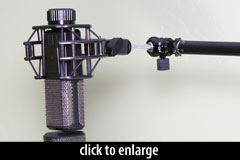 Add the Micro 1… Problem solved. The stand still needs to be adjusted to put the mic into the vicinity of the array. But all the fine positioning is easily and quickly done via the Micro 1.
Add the Micro 1… Problem solved. The stand still needs to be adjusted to put the mic into the vicinity of the array. But all the fine positioning is easily and quickly done via the Micro 1.
In Use
Both the Micro 1 and Micro 2 are beautifully engineered and solidly built. The knobs are textured, making it easy to tighten the ball-and-socket joint. Both of these products feel substantial in the hand.
I hung heavy mics from both these mounts with no problem. The ball-and-socket joints did not bind or stick. At no point did the knobs threaten to strip. As I applied increasing amounts of pressure, the joint simply got tighter and more solid.
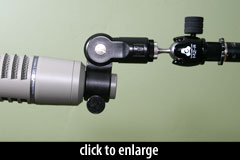 As a torture test, I hung an Electro-Voice RE20 on each of these Micro mounts. The RE20 is not only heavy, but extraordinarily unbalanced, in that the long mic body is cantilevered out from a clip at one end. The Micro 2 held the RE20 in a horizontal position without sagging. The photo at right was taken four hours after I hung the mic.
As a torture test, I hung an Electro-Voice RE20 on each of these Micro mounts. The RE20 is not only heavy, but extraordinarily unbalanced, in that the long mic body is cantilevered out from a clip at one end. The Micro 2 held the RE20 in a horizontal position without sagging. The photo at right was taken four hours after I hung the mic.
The longer Micro 1 couldn’t hold the RE20 in this position; the ball slipped in its socket. I don’t consider this a flaw, though, because the Micro 1 is not designed to suspend heavy weights with the arm parallel to the floor. It was designed as a “hanging mount,” with the long arm intended to provide clearance for shockmount hardware. Here is a better explanation from the manufacturer. (See also the video below for an alternate Micro 1 orientation that probably would have carried the RE20 just fine.)
Tim Ellis, Triad-Orbit
The designed purpose of the Micro 1 is to allow for smooth rotational adjustability in a hanging application. The long stem provides the necessary clearance to rotate the shock mount below (and clear of) the boom without having to unclip or unthread the mic from its spider. For heavier mics, in positions where the stem is horizontal, the Micro 2 is the better choice.
In all my tests, the 5/8-27 female threading on the Micro adaptors was unambiguous and smooth. I’ve used a lot of stand adaptors that wanted to cross-thread, but had no such problems with the Triad products. I should note, too, that if the ball joint is loosened, it is very easy to spin this mount onto a mic stand. (Have you ever found yourself spinning a mic and its shockmount around to thread it onto a stand? I will never do that again!)
Balls and Sockets
Ball-and-socket joints aren’t exactly new or original. I’m surrounded by them…
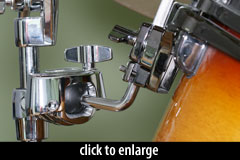 |
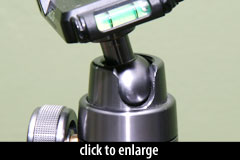 |
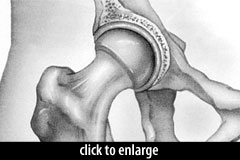 |
My only question is why nobody else had built them into a mic stand yet. Kudos to Triad-Orbit for designing such a smart product.
Conclusion
If you use microphones, you should own an Orbital Mic Adaptor. Even if you own only one microphone, a single Micro 1 or Micro 2 will make your life easier and more fun. But especially if you position many microphones frequently, you should own a box of Micro 1 and Micro 2 adaptors; they will save you time and stress in every session. They put your mic where you need it, without fuss, without sag, and without slippage.
I’m a great fan of products that make everything else you already own work better. The Micro 1 and Micro 2 adapters fit that description. But even more than that, these products are so great that they actually changed my expectations about the way the world is supposed to work. Now I want to use these every time I hang a microphone.
That feeling is not unique:
Click over to Triad-Orbit’s website to read more about the Micro 1 and Micro 2.
See also their amazing articulating-leg mic stands.
See the Micro 1 and Micro 2 in action here:
matthew mcglynn
Disclosure: Triad-Orbit provided no compensation for this review, but did provide the Micro 1 and Micro 2 adaptors on an evaluation loan.
Nonetheless, I am not planning to send the review units back. They are just too good. (Hello Triad-Orbit peoples, you should know better than to loan these things out!)
Posted in Microphones, Reviews | 1 Comment »

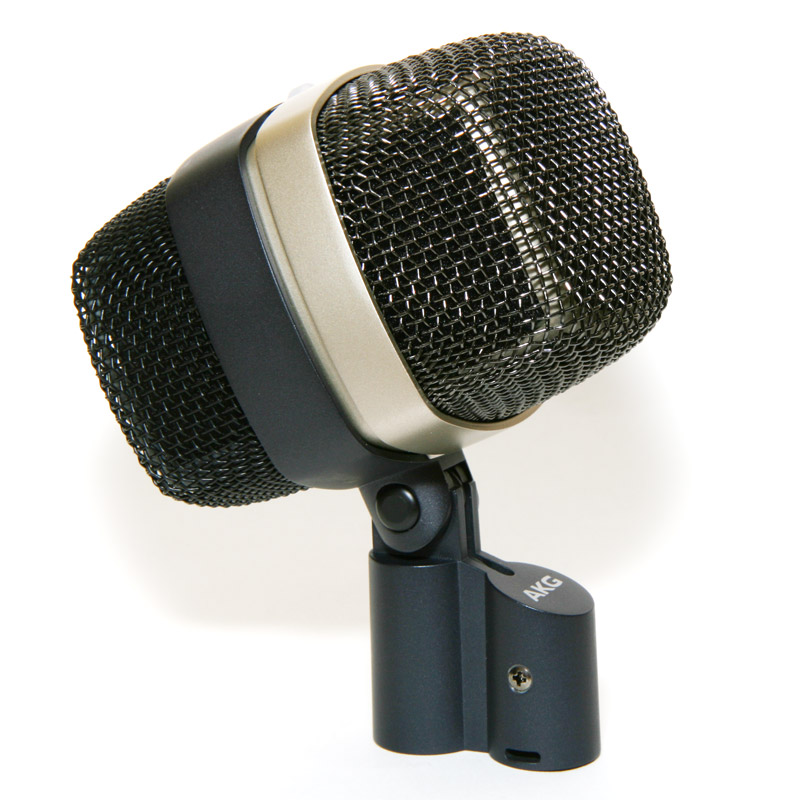
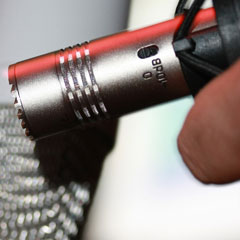
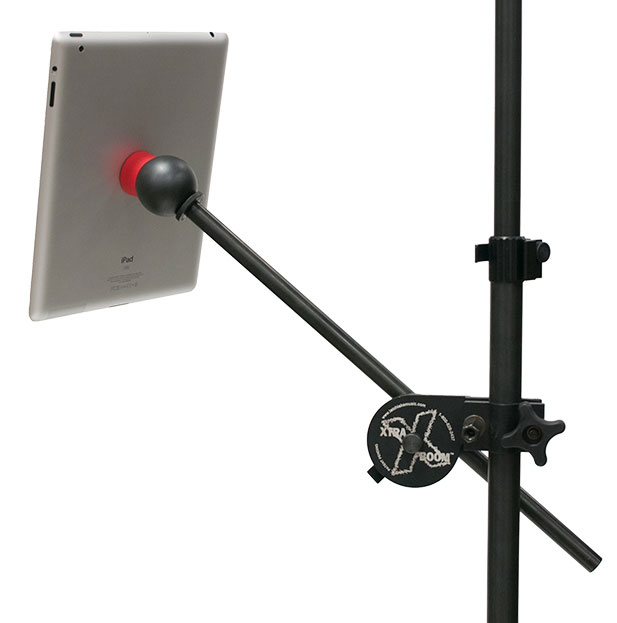
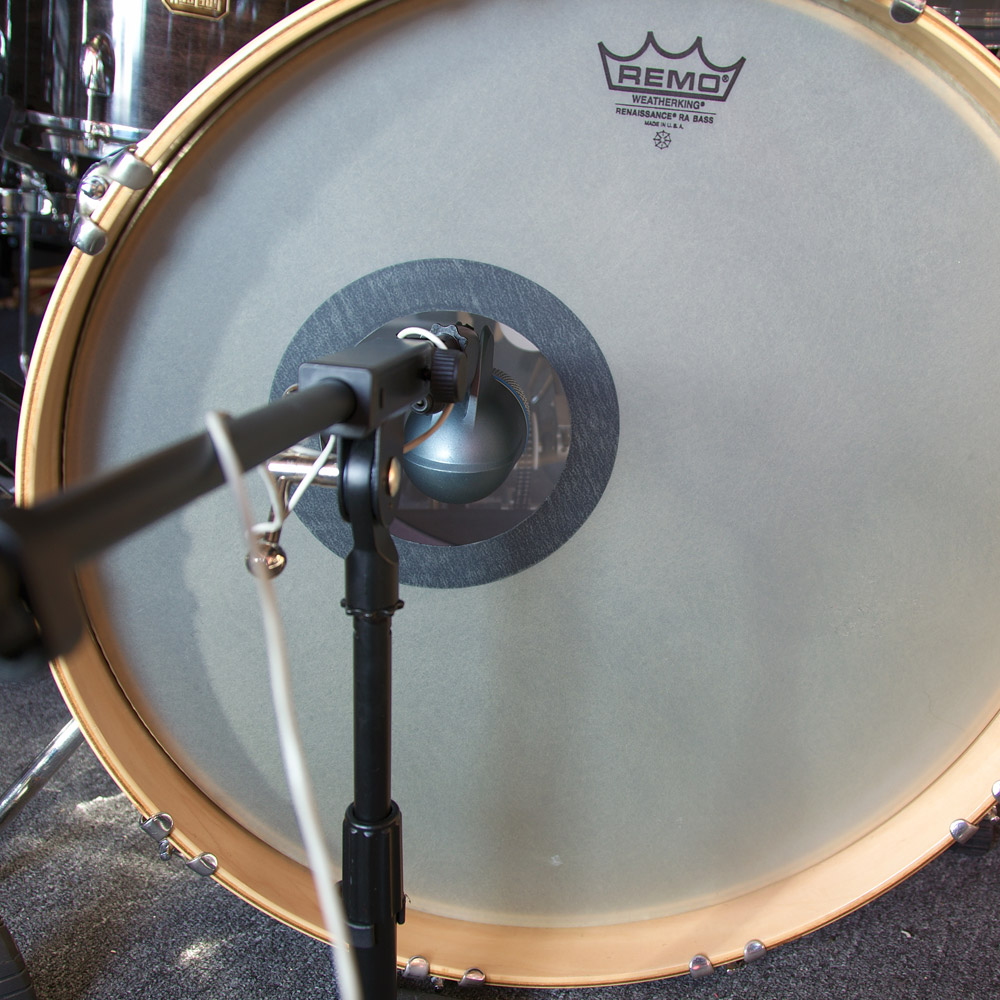
Thomas
May 5th, 2014 at 1:26 am
You can get them from K&M, too. I bought two of them about a year ago and mounted them inside our piano because we needet to close the lid.
http://produkte.k-m.de/de/Mikrofonstative/Zubehoer/19695-Kugelgelenk-schwarz-3-8-Aussengewinde